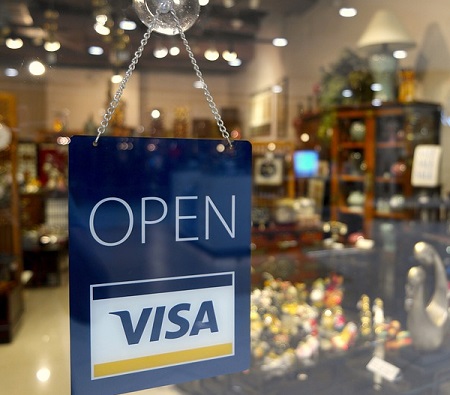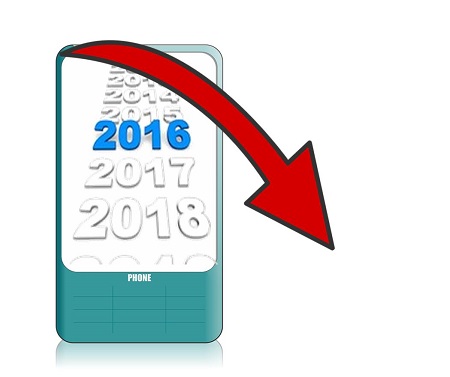Both PayPal and Visa announced that the credit card service would soon be available to the platform’s merchants.
Visa and PayPal have both announced that Braintree mobile payments using merchants will soon have access to Visa Checkout. Braintree is PayPal’s payment processing company catering to online companies. Some of the more notable brands using these mobile payments include Uber, Pinterest, Airbnb and Evenbrite.
With Braintree, merchants can accept a spectrum of different types of online payment options.
The Braintree mobile payments platform lets merchants accept transactions by way of a mobile app, online and in-store. Soon, it will also include Visa Checkout as an option. In this way, Visa cardholders will be able to make a payment to these merchants using any connected device. Visa Checkout is already being used by several online merchants including Walgreens, Best Buy and Starbucks.
A statement from the credit card company pointed out that Visa Checkout will bring familiarity to Braintree mobile payments.
 Visa senior vice president of digital solutions, Sam Shrauger, said “With the Visa card at the center of the payment experience, Visa Checkout brings familiarity and trust to digital shopping offered by Braintree’s customers — some of the most innovative merchants driving eCommerce and mCommerce today.” He also added that Visa is “thrilled” with their new partnership with Braintree and PayPal for improving the way credit cards work on any connected device.
Visa senior vice president of digital solutions, Sam Shrauger, said “With the Visa card at the center of the payment experience, Visa Checkout brings familiarity and trust to digital shopping offered by Braintree’s customers — some of the most innovative merchants driving eCommerce and mCommerce today.” He also added that Visa is “thrilled” with their new partnership with Braintree and PayPal for improving the way credit cards work on any connected device.
Merchants in the United States will gain access to Visa Checkout through the Braintree SDK in early 2017. The seamless integration of that SDK makes it possible for merchants to enable new buying experiences and payment options. At the moment, there are 14 million consumer accounts with Visa Checkout as well as thousands of merchant accounts.
This new agreement between PayPal and Visa has arrived at a time when some of the heat has eased in the rivalry between the two companies. They announced a strategic partnership in July. That brought the largest global payment network together with the biggest digital payments network. With Braintree mobile payments there will be improved choice for consumers paying with PayPal accounts. The companies feel this is taking them both “on a new path.”
Denny |
September 7, 2016
Emerging markets are continuing to exhibit positive growth, but as a whole it is declining in developed regions.
According to the Worldwide Quarterly Mobile Phone Tracker from the International Data Corporation (IDC), smartphone sales are declining as expected. Many forecasts pointed to an overall slowdown of mobile phone sales in 2016. This is linked to a reduction in sales in developed regions.
Despite the positive growth that continues in emerging markets, it isn’t enough to keep the entire marketplace’s pace.
The report showed that much of the smartphone sales currently occurring in developed regions is in replacements. The rate of new users has decreased substantially as penetration within these populations is now very high. The report predicted a 1.6 year over year growth of smartphone shipments in 2016. This, upon the shipment of 1.46 billion units by the end of the year. That may appear to be a healthy number, but it is a fraction of what it was last year. In 2015, the year over year growth rate for smartphone shipments was 10.4 percent.
As a whole, developed markets are expected to see a negative growth rate in smartphone sales.
 The report took the United States, Canada, Western Europe and Japan into its definition of developed markets. Within that region, the IDC predicts a -0.2 percent compound annual growth rate (CAGR). Emerging markets were made up of Central and Eastern Europe, the Asia Pacific Region (except for Japan), Africa, the Middle East and Latin America. They are expected to see a 5.4 percent CAGR throughout the forecast period of 2015 to 2020.
The report took the United States, Canada, Western Europe and Japan into its definition of developed markets. Within that region, the IDC predicts a -0.2 percent compound annual growth rate (CAGR). Emerging markets were made up of Central and Eastern Europe, the Asia Pacific Region (except for Japan), Africa, the Middle East and Latin America. They are expected to see a 5.4 percent CAGR throughout the forecast period of 2015 to 2020.
Senior IDC research analyst at the Worldwide Quarterly Mobile Device Trackers, Jitesh Ubrani, said “Growth in the smartphone market is quickly becoming reliant on replacing existing handsets rather than seeking new users.” Ubrani also stated that from the point of view of the tech side, innovation is “in a lull.” Consumers have greatly reduced their inclination to purchase the latest device with all the newest bells and whistles. Instead, they are satisfied with mobile devices that are “good enough.”
Telcos have been working hard to breathe life back into their smartphone sales. Programs such as trade-ins and buy-backs are geared toward shortening lifecycles and increasing the inclination to purchase early replacements.
 Visa senior vice president of digital solutions, Sam Shrauger, said “With the Visa card at the center of the payment experience, Visa Checkout brings familiarity and trust to digital shopping offered by Braintree’s customers — some of the most innovative merchants driving eCommerce and mCommerce today.” He also added that Visa is “thrilled” with their new partnership with Braintree and PayPal for improving the way credit cards work on any connected device.
Visa senior vice president of digital solutions, Sam Shrauger, said “With the Visa card at the center of the payment experience, Visa Checkout brings familiarity and trust to digital shopping offered by Braintree’s customers — some of the most innovative merchants driving eCommerce and mCommerce today.” He also added that Visa is “thrilled” with their new partnership with Braintree and PayPal for improving the way credit cards work on any connected device.
 The report took the United States, Canada, Western Europe and Japan into its definition of developed markets. Within that region, the IDC predicts a -0.2 percent compound annual
The report took the United States, Canada, Western Europe and Japan into its definition of developed markets. Within that region, the IDC predicts a -0.2 percent compound annual 